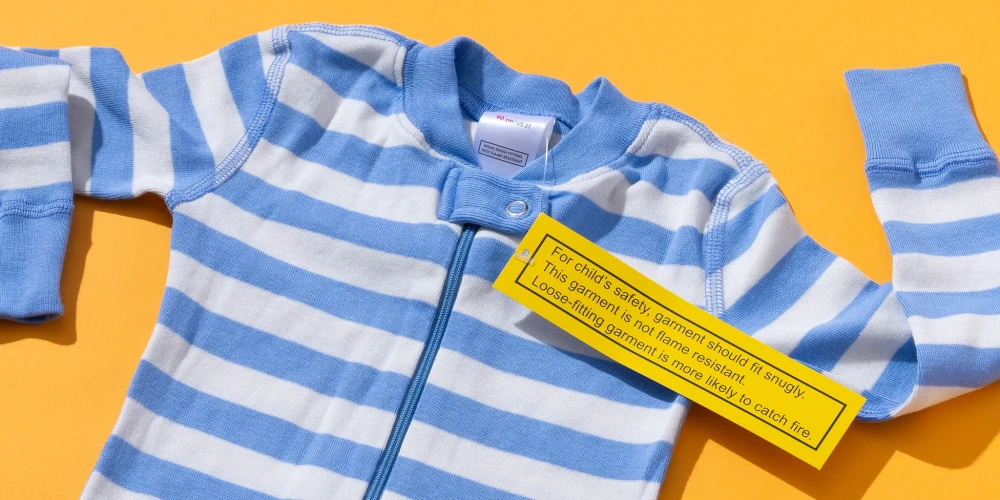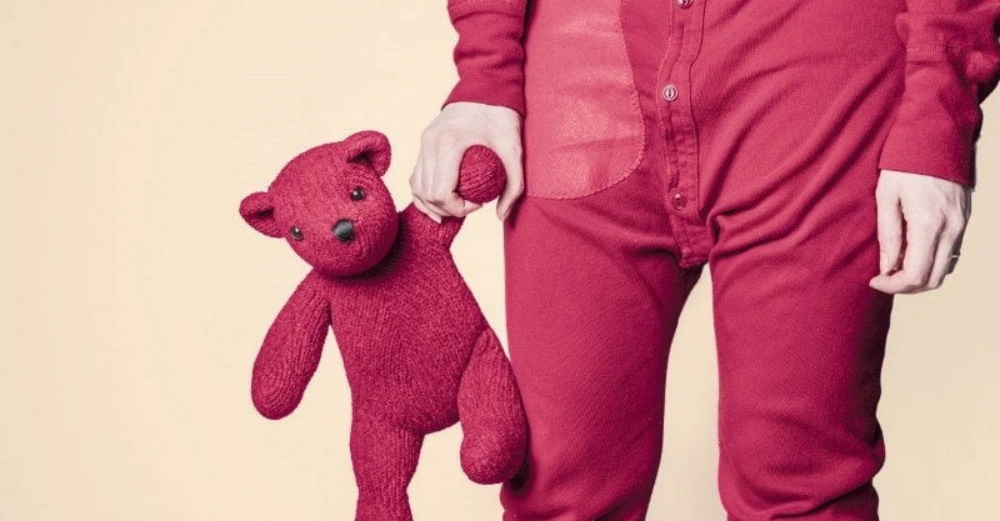As a parent, you’ve probably wondered if those flame-retardant pajamas are really safe for your kids. While they’re designed to prevent fires, there’s been growing concern about the chemicals used in them. We’ve all heard about the potential health risks of chemicals in clothes, and flame retardant fabrics are no exception. So, how safe are they, really?
In this article, we’ll break down what you need to know about flame retardant pajamas, including any health risks, how the chemicals work, and safer alternatives that still keep your child protected. Let’s dive in!
History of Flame Retardants in Pajamas
Origins of the Flammable Fabrics Act (FFA)
Back in 1953, the Flammable Fabrics Act (FFA) was passed to keep children safe from highly flammable fabrics, especially in their pajamas. This came after some tragic incidents in the 1940s where children’s sleepwear caught fire, causing injuries and even deaths.
Fabrics like cotton were super flammable, and these devastating events sparked the need for regulation. The FFA aimed to make fabrics safer by setting standards that reduced flammability. That’s when manufacturers began treating pajamas with chemicals to make them less flammable, a step that seemed like a good solution at the time.
The Evolution of Flame Retardants
Over the years, the chemicals used to treat pajamas changed. In the 1970s, manufacturers started using brominated and chlorinated flame retardants. These worked well to make fabrics resistant to fire, but soon experts discovered that some of these chemicals could cause serious health problems, like cancer and DNA damage.
So, newer chemicals were introduced, but the environmental issues didn’t go away. The newer flame retardants still stick around in our environment—building up in house dust, water, and even in people and animals. Now, research is showing that these chemicals can be harmful in ways we didn’t realize, like affecting our nervous and endocrine systems, leading to growing concerns about their long-term impact.
Flame Retardants in Pajamas: How They Work

Purpose of Flame Retardants
Flame retardants are chemicals that get added to fabrics to make them less flammable. So, when you hear that your child’s pajamas are flame-resistant, it’s because of these chemicals. The whole idea is to stop or slow down the spread of fire.
Children’s pajamas are especially at risk because kids are always on the move and might accidentally come into contact with heat sources. That’s why these chemicals are used to treat pajamas, especially those made from flammable fabrics like cotton, to help protect them from fires.
Types of Flame Retardants
There are different types of flame retardants used in pajamas, and each one works in its own way to prevent flames. In the past, chemicals like brominated and chlorinated flame retardants were commonly used.
While they worked well, they raised health concerns over time, including links to things like cancer and developmental issues. Today, newer flame retardants are in use, but they still have some risks, especially for the environment and health. So while these chemicals make pajamas safer in case of fire, the long-term effects are still something worth thinking about.
The Risks of Flame Retardants in Pajamas

Health Risks of Flame Retardants
Some flame retardants used in pajamas may pose serious health risks. Certain chemicals can damage DNA (mutagenic), which can increase the chances of cancer (carcinogenic), and even affect the brain and nervous system (neurotoxic).
These chemicals don’t just threaten human health—they also harm the environment, affecting air, water, and soil. So, while flame retardants are intended to keep kids safe from fires, they can create other health risks.
Endocrine Disruption
Another big concern is how these chemicals can mess with your child’s hormones. Hormones control pretty much everything in the body—from growth to mood, even metabolism. These flame retardants can disrupt hormone production, which might lead to serious health issues, especially for growing kids. A small hormone change today could mean bigger problems tomorrow.
Bioaccumulation in Humans and Wildlife
Flame retardants don’t just disappear after use—they stick around. These chemicals build up over time in house dust, water, and even in our bodies. As they accumulate, they cause long-term exposure to both humans and animals.
This bioaccumulation means that both we and wildlife are constantly exposed, which isn’t good for anyone. In the long run, these chemicals can harm ecosystems and even find their way into our food supply.
Regulatory Guidelines and Pajama Safety
FFA and Modern Standards
The Flammable Fabrics Act (FFA) was created to help protect children from the dangers of highly flammable sleepwear. It sets safety standards that fabrics, especially those used in children’s pajamas, must meet to reduce the risk of fire.
This law requires that pajamas for young children (under the age of 9) fit tightly to the body to prevent extra fabric from catching flames. If pajamas don’t fit snugly, manufacturers often treat them with flame retardants to meet the necessary flammability standards.
These regulations were put in place to ensure kids stay safe while sleeping, but they also created the need for strict testing and guidelines for manufacturers.
Yellow Label Warning
When shopping for pajamas, you may come across a yellow label warning. This label indicates that the pajamas are not treated with flame-retardant chemicals and may not meet the flammability standards set by the FFA.
These pajamas are typically made of more flame-resistant fabrics, like tight-knit cotton, but are not guaranteed to be fireproof. The yellow label is there to let you know that extra precautions should be taken if your child is near a heat source or open flame. It’s a good idea to pay attention to these labels and consider other factors, like fit and fabric, when making your purchase.
Are There Safer Alternatives to Flame Retardant Pajamas?
Looking for safer options for your little one’s sleepwear? You’re not alone. Many parents are wondering if there are safer, more natural alternatives to pajamas treated with flame retardants. While these chemicals are commonly used to reduce fire risks, there are other ways to keep your child safe—without relying on chemicals. Let’s explore a few options that could give you peace of mind.
Snug-Fitting Pajamas
A simple and effective way to reduce flammability risk is by choosing snug-fitting pajamas. The Flammable Fabrics Act (FFA) recommends tight-fitting sleepwear for young kids because loose clothes can catch fire more easily.
When pajamas fit closely to your child’s body, there’s less fabric to catch on flames, so flame retardants are less necessary. So, for peace of mind and comfort, snug-fitting pajamas are definitely worth considering.
100% Polyester Pajamas
Polyester material is naturally flame-resistant, so it doesn’t need chemical treatments to meet fire safety standards. Polyester pajamas can resist ignition on their own, making them a safer choice than some treated fabrics. Plus, they’re durable, easy to care for, and hold up well to washing. Just check the label to make sure it’s 100% polyester!
Other Natural and Safe Fabrics
If you prefer natural fabrics, there are still safe choices out there. Look for flame-resistant cotton blends—some come pre-treated with fire-resistant finishes, but there are also blends made with naturally flame-resistant materials like modacrylic. These options can offer both comfort and safety, so just make sure to double-check the labels for any chemical treatments.
Can Flame Retardants Contribute to Other Health Issues?
Juvenile Diabetes
You may not realize that flame retardants might be linked to juvenile diabetes. While more research is needed, some studies suggest that certain flame retardant chemicals could disrupt metabolism or insulin production.
This can raise the risk of developing diabetes in children, especially during those critical years when their bodies are still developing. However, when it comes to exposure, pajamas are just one source. Other common household items, like furniture, carpets, and electronics, might expose your child to higher levels of flame retardants.
It’s important to consider the broader picture of where these chemicals might be lurking in your home.
Other Environmental Concerns
Flame retardants don’t just affect human health—they’re also a big problem for the environment. These chemicals can seep into water, soil, and air, where they stick around for years. They can get into ecosystems, harming wildlife that accidentally ingests or absorbs them.
The chemicals can even accumulate in the food chain, which means that creatures higher up—like birds, fish, or humans—may end up ingesting these harmful substances. So, while flame retardants might seem like a safety feature, they come with long-lasting environmental consequences that can affect both nature and our health.
How to Choose Safe Pajamas for Your Child?

Checking for Safety Labels
First things first—check the safety labels! You’ll find these on the tag and they’ll tell you whether the pajamas are flame-resistant or treated with chemicals. A “flame-resistant” label means the fabric has been treated to meet certain standards. If you’d rather skip the chemicals, look for pajamas labeled “chemical-free” or “100% cotton.”
Just be wary of vague labels or ones that don’t give much detail—this might mean the pajamas haven’t been properly tested for safety. Always use the label as your guide to make sure you’re making the right choice.
Prioritize Quality Over Price
We know, shopping for pajamas can get pricey, but when it comes to your child’s sleepwear, it’s worth investing in quality. The cheaper options often cut corners, and you don’t want to risk your child’s safety just to save a few bucks.
Stick to well-known brands that care about both safety and quality. These brands are more likely to follow safety guidelines and give you peace of mind about what’s in their products. Trust me, it’s totally worth it for your child’s well-being.
Shop for Snug-Fitting, Chemical-Free Pajamas
When in doubt, go for snug-fitting pajamas. Loose clothes can increase fire risks, so tight pajamas are a safer bet for young kids. Look for natural fabrics like cotton or naturally flame-resistant fabrics like polyester.
If you want to skip chemicals entirely, check for “chemical-free” labels. Organic cotton is a great choice, too, since it avoids harmful pesticides. Snug-fitting and natural materials will keep your child safe and comfy all night long.
The Importance of Staying Informed
New research and regulations are constantly shaping how we view safety in sleepwear, so it’s important to keep up.
Ongoing Research and Regulations
The conversation about flame retardants in pajamas is always changing. New studies are being released, helping us understand the potential risks of these chemicals and if they’re truly safe for kids. Regulations are shifting, too, with governments updating safety standards.
What was considered safe a few years ago might not be anymore. By staying informed, you can make sure your child’s pajamas meet the latest safety guidelines.
The Role of Parents in Protecting Children
As a parent, you have a big role in your child’s safety. With so much information out there, it can be overwhelming, but staying updated on new research and guidelines makes it easier to make the best choices for your little one.
Whether it’s picking the right fabrics or understanding new safety standards, being in the loop means you’re better equipped to make decisions that keep your child safe and sound at bedtime.
Being Proactive and Making Informed Choices
Staying informed isn’t just about reading up on new studies—it’s about taking action. Do a little research before buying pajamas, check out the latest safety updates, and always read labels. By making informed choices and being proactive, you’ll ensure your child is safe, comfortable, and free from hidden dangers while they sleep.
Conclusion
Understanding the risks of flame retardants is essential when shopping for your child’s pajamas. While flame-resistant options offer fire protection, the chemicals used to treat them might not be the healthiest choice for your little one. Explore safer alternatives like snug-fitting cotton pajamas or options free from harmful chemicals for added peace of mind.
Your child’s health should always come first, so prioritize safety when choosing sleepwear. We’d love to know your thoughts—how do you feel about flame-retardant pajamas? Share this article with fellow parents, and for safe kid’s clothing, check out the trusted options at Friendtex.
FAQ
Are Pajamas Flame Retardant?
Not all pajamas are flame retardant. Some kids’ pajamas are treated with flame retardants to meet safety standards, while others use naturally flame-resistant fabrics like polyester. To be sure, check for a “flame-resistant” label on the tag when you’re shopping for your child’s sleepwear.
Do Kids Pajamas Have to Be Flame Retardant?
In the U.S., kids’ pajamas must meet specific safety standards, but flame retardants aren’t always required. You can find safe alternatives made from snug-fitting cotton or naturally flame-resistant materials like polyester. Always check the label to make sure the pajamas meet safety guidelines.
How to Remove Flame Retardant from Pajamas?
Start with the care label to check for any specific washing instructions.
Soak the pajamas in warm water with a gentle, non-toxic detergent.
Wash them separately to avoid transferring chemicals to other clothes.
Rinse thoroughly to get rid of detergent residue.
Air dry the pajamas to keep the fabric in good shape.
Keep in mind, though, that flame retardants are designed to be permanent, so removing them entirely may not be possible.
Is Flame Resistant Clothing Toxic?
Flame-resistant clothing can be toxic depending on the chemicals used. Some flame retardants, like PBDEs, have raised concerns over their potential health risks. If you’re worried, look for clothes that use non-toxic, safer flame-resistant treatments or natural, chemical-free fabrics.
Are Baby Clothes Flame Resistant?
Baby clothes are usually made from natural fabrics like cotton, which aren’t naturally flame-resistant. However, some brands do offer flame-resistant options, typically treated with chemicals. Always check the label to ensure your baby’s clothes meet fire safety standards.
Is Flame Retardant Toxic?
Flame retardants can be toxic, depending on the specific chemicals used. Some, like organophosphate flame retardants, have been linked to health problems, including hormone disruption. Look for alternatives that are safer and chemical-free, or opt for natural fabrics that don’t need these treatments.


